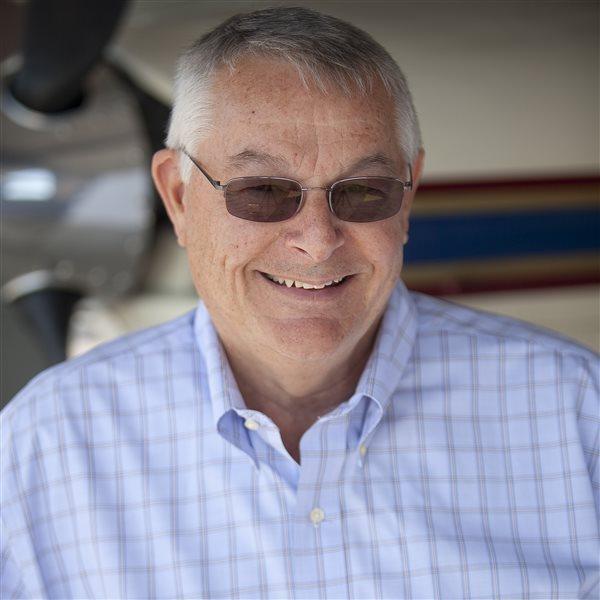Ten years ago, Roy LoPresti — known for his design work on the Grumman Tiger and Cougar, the Mooney 201, and a host of Beech aircraft — developed a hot tailwheel aircraft.
Hot pink and Chinese red, in fact. The following year — 1990 — the retractable-gear two-seater had a coat of Saturn yellow, a few new design ideas, and 570 deposits from prospective buyers. But his backer was Piper Aircraft, and the rocky financial times that followed meant there was no money to continue the project (see "Not-so-Mellow Yellow," July 1990 Pilot).
Still not mellow, the much-modified 53-year-old Globe Swift prototype is now Ferrari yellow. Only 5 percent of its parts are common to the Globe Swift, and when the production prototype is finished, it will be an entirely unique airplane, LoPresti says. Seventy customers have placed $2,500 each in certificates of deposit at a Vero Beach, Florida, bank.
The final product is to be a sportsman's aircraft capable of plus six and minus three Gs for light aerobatics, but also able to carry two people and typical vacation baggage from Florida to New York in five hours. As designed, the aircraft is meant for positive-G aerobatics, but inverted fuel and oil systems for sustained inverted flight can be provided as an option.
"Soon we expect to be able to tell you where the plane will be built, when your order slot will be filled, and what the dollar figure will be," LoPresti said in his factory office at Vero Beach Municipal Airport. The Fury will be built by LoPresti Inc. A second company called LoPresti Speed Merchants does aerodynamic modifications on a variety of aircraft. Still needed for the Fury are $10 million for certification under a new type certificate and $5 million to spool up production. LoPresti is talking to potential investors in Kentucky and elsewhere.
"Today we expect the price will be between $170,000 and $175,000. We got that number by taking the price we had in 1990 and multiplying it by the consumer price index," LoPresti said.
As one might expect from the speed- mod expert, there are many changes planned for what is now known as the LoPresti Fury.
Among them is a locking, retractable tailwheel fully enclosed in flight by gear doors.
"There will also be some drag reduction — since speed sells — that I am not at liberty to discuss. The airplane is now 217 miles an hour [at sea level]. I would like to get 225," LoPresti said. During Pilot's testing in 1990, the airplane flew at 209 mph (182 kt TAS) at 2,300 feet using full throttle and 2,700 rpm, and it flew 199 mph (173 kt TAS) at 9,500 feet with full throttle and 2,500 rpm. Not bad for a 200-horsepower Lycoming IO-360A.
Other improvements include a new canopy of tubular steel that is very stiff; it will be designed to "fit like your hand in a glove," LoPresti said. The present canopy doesn't fit tightly, and that causes drag.
"It will also have dual redundant brakes, like in a modern car," LoPresti said. "You have two sets of brake cylinders in a modern car. If one fails, you can still stop the car. We want to be sure that we can still steer this airplane. Brakes are the only way you can steer. There will be a crossover torque tube from the copilot's to the pilot's side."
The aircraft won't even look like its Swift ancestor. The vertical tail will be larger. It also will sport changes designed to improve landing characteristics.
"The gear will have sequenced doors to close up the gear wells when the gear is extended," LoPresti said. "That will greatly improve landing characteristics over the old Globe Swift."
The prototype featured a stick and throttle covered with buttons for remote operation of aircraft and avionics systems — a concept known as HOTAS, or hands on throttle and stick. The production version will feature fewer remote operations.
"People weren't too keen on five buttons on the throttle. The fuel boost pump and recognition lights were taken off. All we have now are wing flaps, speed brakes, and landing lights," LoPresti said.
LoPresti says he has spent $8 million so far on development of the aircraft. Certification will be done in-house and take two-and-one-half years.
In the meantime, LoPresti has been scouting out sites for a new Fury factory. He particularly likes Russell County Airport near Jamestown, Kentucky. In fact, he likes it so much that he has already opened an FBO there called LoPresti Kentucky.
LoPresti said the control harmony of the aircraft is his best sales tool, and a knowledgeable pilot is his best customer. "If a guy shows up wearing an airline ballcap [an airline pilot], I've got him. He is sold on the airplane," LoPresti said. "There is no measurable friction in the control system. They'll put their hands on the controls and move it, and look at the control surfaces and say, 'Yeah, it is attached. I thought it wasn't even attached.' It's hard to get those guys out of the cockpit." The controls are roller-bearing, push-rod types for both pitch and roll.
LoPresti's claim was proven during a formation flight. The airplane was a joy to fly despite the demands for precision flying. After the photo shoot, the Fury smoothly recovered from steep banks and unusual attitudes.
Most gratifying to LoPresti is the reaction from two-pilot families. He is finding that customers want a second airplane for a family member.
"When you have one family that wants to buy two airplanes, you are doing something kind of special," LoPresti said.
For more information, visit AOPA Online ( www.aopa.org/members/files/pilot/1997/swft9711.html). Links to additional information on the Fury can be found on AOPA Online ( www.aopa.org/pilot/links/links9910.shtml). E-mail the author at [email protected].



